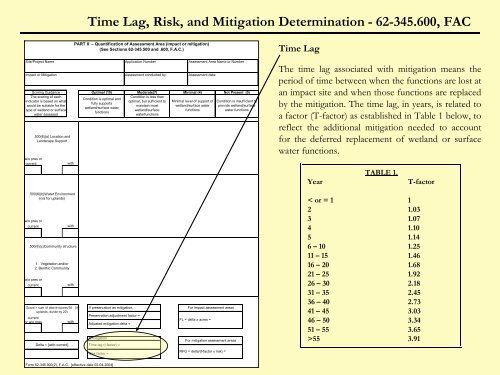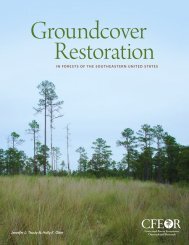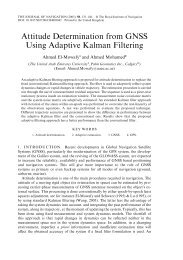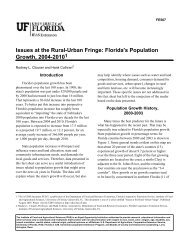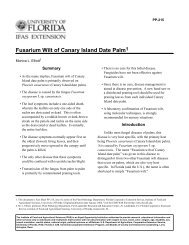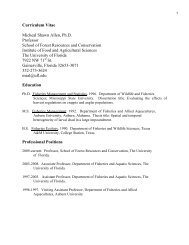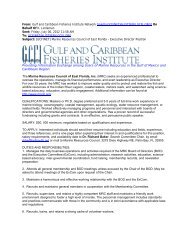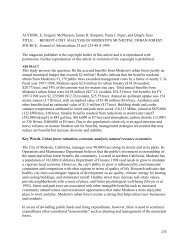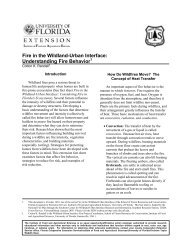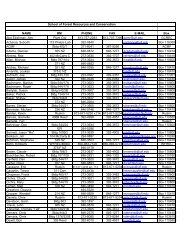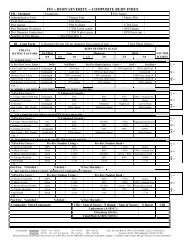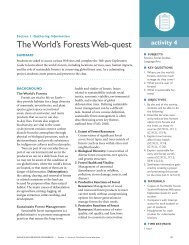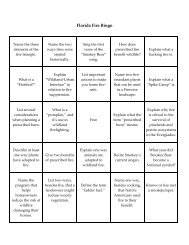Uniform Mitigation Assessment Method TRAINING MANUAL
Uniform Mitigation Assessment Method TRAINING MANUAL
Uniform Mitigation Assessment Method TRAINING MANUAL
Create successful ePaper yourself
Turn your PDF publications into a flip-book with our unique Google optimized e-Paper software.
Time Lag, Risk, and <strong>Mitigation</strong> Determination - 62-345.600, FAC<br />
Scoring Guidance<br />
The scoring of each<br />
indicator is based on what<br />
would be suitable for the<br />
type of wetland or surface<br />
water assessed<br />
w/o pres or<br />
current<br />
PART II – Quantification of <strong>Assessment</strong> Area (impact or mitigation)<br />
(See Sections 62-345.500 and .600, F.A.C.)<br />
Site/Project Name Application Number <strong>Assessment</strong> Area Name or Number<br />
Impact or <strong>Mitigation</strong><br />
.500(6)(a) Location and<br />
Landscape Support<br />
with<br />
Optimal (10)<br />
Condition is optimal and<br />
fully supports<br />
wetland/surface water<br />
functions<br />
<strong>Assessment</strong> conducted by:<br />
Moderate(7) Minimal (4)<br />
Condition is less than<br />
optimal, but sufficient to<br />
maintain most<br />
wetland/surface<br />
waterfunctions<br />
<strong>Assessment</strong> date:<br />
Minimal level of support of<br />
wetland/surface water<br />
functions<br />
Not Present (0)<br />
Condition is insufficient to<br />
provide wetland/surface<br />
water functions<br />
Time Lag<br />
The time lag associated with mitigation means the<br />
period of time between when the functions are lost at<br />
an impact site and when those functions are replaced<br />
by the mitigation. The time lag, in years, is related to<br />
a factor (T-factor) as established in Table 1 below, to<br />
reflect the additional mitigation needed to account<br />
for the deferred replacement of wetland or surface<br />
water functions.<br />
Year<br />
TABLE 1.<br />
T-factor<br />
.500(6)(b)Water Environment<br />
(n/a for uplands)<br />
w/o pres or<br />
current<br />
w/o pres or<br />
current<br />
current<br />
or w/o pres<br />
Delta = [with-current]<br />
with<br />
.500(6)(c)Community structure<br />
1. Vegetation and/or<br />
2. Benthic Community<br />
with<br />
Score = sum of above scores/30 (if<br />
uplands, divide by 20)<br />
with<br />
If preservation as mitigation,<br />
Preservation adjustment factor =<br />
Adjusted mitigation delta =<br />
If mitigation<br />
Time lag (t-factor) =<br />
For impact assessment areas<br />
FL = delta x acres =<br />
For mitigation assessment areas<br />
< or = 1 1<br />
2 1.03<br />
3 1.07<br />
4 1.10<br />
5 1.14<br />
6 – 10 1.25<br />
11 – 15 1.46<br />
16 – 20 1.68<br />
21 – 25 1.92<br />
26 – 30 2.18<br />
31 – 35 2.45<br />
36 – 40 2.73<br />
41 – 45 3.03<br />
46 – 50 3.34<br />
51 – 55 3.65<br />
>55 3.91<br />
Risk factor =<br />
RFG = delta/(t-factor x risk) =<br />
Form 62-345.900(2), F.A.C. [effective date 02-04-2004]


